Genesis: Born to carry the 25 pdr
The experience in North Africa led the British Army to seek a way to carry their 25 pdr (87.6 mm /3.45 in) gun howitzer on the battlefield. The Bishop was therefore produced, using a Valentine chassis, equipped with a fully enclosed superstructure. Only a few were built, because the American M7 Priest was made quickly available. However, the Priest used the American 105 mm (4.13 in) howitzer, and this caused problems for the ordnance. Therefore, there was an attempt by the Americans to devise a tracked carrier for the QF 25-pdr, the T51 prototypes. These were based on the M3 Lee chassis, but suffered problems and delays during trials. The British staff therefore turned to Canada, already experienced with the Ram. The Canadian Army Engineering Design Branch, dependent of the government's Department of Munitions and Supply, were asked to build a similar vehicle to the M7 on the Ram chassis.Development
The design bureau of the Montreal Locomotive Works was given the task to use the M3 Lee chassis and mount on a custom platform the 25 pdr (87.6 mm /3.45 in), with storage and some armor protection. The M7 Priest (also based on the M3 chassis) was indeed a major inspiration for the designers, which could deliver a prototype on short notice. It was completed on 23 June 1942 and tested by the Canadian army, which ordered 125 vehicles in three batches. The prototype was shipped to Great Britain for evaluation at the beginning of 1943, and was approved in March 1943 for mass production, under the name of Sexton (another episcopal reference).Characteristics
The Sexton was, indeed, similar in many ways to the Priest, but the lighter gun-howitzer could be depressed to be used in direct fire, but in practice they were rarely used this way. The gun had a +40° to -9° elevation and a 25° left 15° right traverse. Storage for the 105 rounds (mostly HE) was found at the rear in large vertical lockers, and laid down under the double floor bay. The crew was protected by a maximum of 32 mm (1.26 in) of armor to the front, but it was an open top superstructure and the lower sides and rear plates barely protected against shell fragments and bullets. The Sexton was designed to operate from the behind the front line, like any support artillery, using forward observers to direct fire on a target.The chassis was similar to the Ram, with a three bogies wheeltrain, front idlers and rear drive sprockets, propelled by a Continental R-975 9 cylinder radial gasoline giving 400 hp. Auxiliary armament was provided by two removable 0.303 (7.7 mm) Bren light machine guns, supplied by fifty 30-round magazines. By 1944, the Mk.II appeared, specifically for the British army, built on the Grizzly chassis. Changes were visible on the drivetrain, bogies, storage and accommodation details, like the boxes added to the rear deck to carry batteries, with an auxiliary charging generator.
Production & variants
The first series, based on the Ram, was called Sexton Mk.I, and only used by Canadian Forces, whereas the standardized Sexton Mk.II was based on the Grizzly (a local version of the M4A1 Sherman). About 2,026 vehicles were ordered, and were produced from early 1944 until early 1945 (S-233626 to S-235061), for a grand total of 2,150 at the Montreal Locomotive Works. Variants included also the Sexton GPO (Gun Position Officer), without a gun, the space being allocated to an extra No. 19 Wireless radio and map tables. These command vehicles were used to control and coordinate battery fire.The Sexton in action
The vehicle entered service in September 1943. Canadian Sextons were first used in combat in Italy by the British Eighth Army, and later took part in the invasion of France, the whole Battle of Normandy, and the following campaign in north-western Europe (Belgium, Netherlands and Western Germany). For the anecdote, during the D-day landings some Sextons were ordered to fire from their landing craft when approaching the beaches, but to no avail. The Sexton was also used by South African and Polish crews. It was generally considered a successful design, remaining in British service until 1956. Apparently, some were also used after the war by the Portuguese Army, possibly in Angola. The Australian Yeramba was a postwar experimental SPG largely inspired by the Sexton.Links about the Sexton SPG
The Sexton on WikipediaSexton Mk.II specifications |
|
| Dimensions | 6.12 x 2.71 x 2.44 m (20 x 8.11 x 8 ft) |
| Total weight, battle ready | 25 tons (55,115 lbs) |
| Crew | 6 (commander, driver, gunner, gun-layer, loader, radio operator) |
| Propulsion | Continental R-975 9-cyl radial Gasoline 400 hp (298 kW) |
| Maximum speed | 40 km/h (25 mph) |
| Transmission | Borg-Warner clutch, controlled differential |
| Suspension | Vertical Volute Springs (VVSS) |
| Range | 200 km (125 mi) |
| Armament | Main : 25-pdr (87.6 mm /3.45 in) - 105 rounds
Secondary: 2 x.303 cal. (7.7 mm) Browning machine guns -1500 rounds |
| Armor | Maximum 32 mm (2 in) |
| Total production | 2150 |
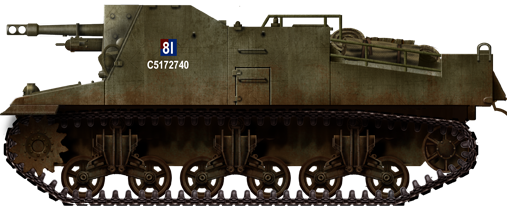
Canadian Sexton Mk.I in Italy, with the VIIIth Army, early 1944.
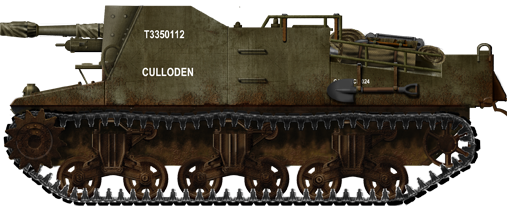
British Sexton Mk. II "Exterminator" in Italy, 1944.
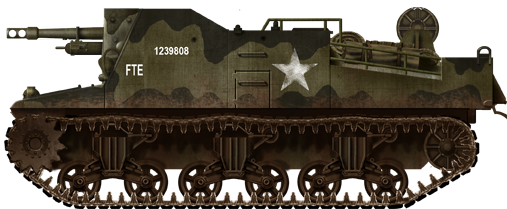
Sexton 2 of the 147th (Essex Yeomanry) field regiment RHA, Normandy 1944.
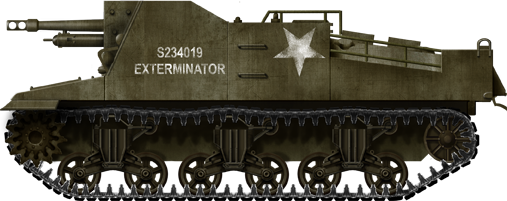
Sexton Mk. II "Exterminator" in Italy, 1944.
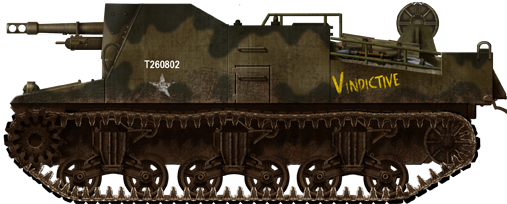
Sexton II on the 4th Royal Horse Artilley, 4th armoured brigade, Weert 1944.
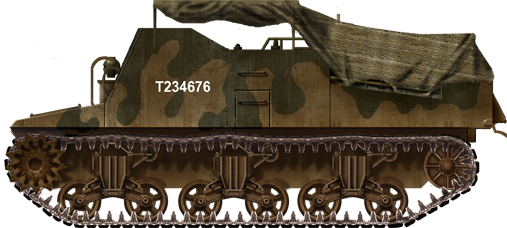
Sexton GPO, Netherlands, winter 1944-1945.
Gallery
Sexton SPG at the Warsaw museum


WW2 Tanks




























WW2 tanks posters

All Tiger tanks liveries.

Panther liveries and variants

WW2 Armour - All tanks











Tanks aces and single tanks series

Find more there

Museums, Movies, Books & Games
The Tanks and Armor in pop culture
Tanks and armored vehicles in general are only really grasped when seen first person: The mass, the scale, it's all there. Explore also the way tanks were covered in the movie industry, in books and in video games.Movies:
Best tanks movie on warhistoryonline.com
On imdb.com
On bestsimilar.com/
miltours.com
liveabout.com/
watchmojo.com
Video Games:
pcgamesn.com
historyhit.com
levvvel.com
vg247.com/best-tank-games
mmobomb.com/
alienwarearena.com

